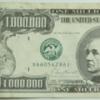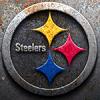I'll try and be succinct: is anyone able to offer advice on aligning one pass with another, when engraving something bigger than the laser bed?
Our 1300 x 700 bed laser is all I have at the moment. I've enquired all over SE Qld, and only ONE business has a machine that can engrave the size I need, and they don't like the idea. Plenty can cut big, but not engrave.
The image I need engraved on acrylic is 8x3 ft, 2400 x 930mm, to go in the middle of a 10 x 4 ft sheet, 3050 x 1220mm at 10mm thick.
So in theory I could fit it in 4 passes at full width, plus a bit of room for the head to turn around- 4 x 700mm bed depth = 2800mm and we need 2400 mm.
BUT if I did the first quarter, and clamped blocks to the bed, and then slid the acrylic along for the next quarter, I need to stop it in the right spot to pick up the next lot of engraving from. I've fiddled and a minor overlap is better than a minor empty missing line, but I'm seeking advice on this realignment process from anyone who's actually done it before!
As well as I can guess, I'd need to embed a hairline line in the image, every 700mm or 650mm, in an unimportant part of the margin, so that I can align that up with a test-firing to begin the next section - or am I wrong?
I also have to see if the machine can handle the memory needed to do this, of if each quarter has to be broken into thirds and etched like that...
___________
On our CNC router, I've handled a few jobs way bigger than the bed, but I have origins and marks all down pat and have no problem stepping along. But then vectors are a bit easier than a BMP...
Thanks in advance for any hints!




 Reply With Quote
Reply With Quote






